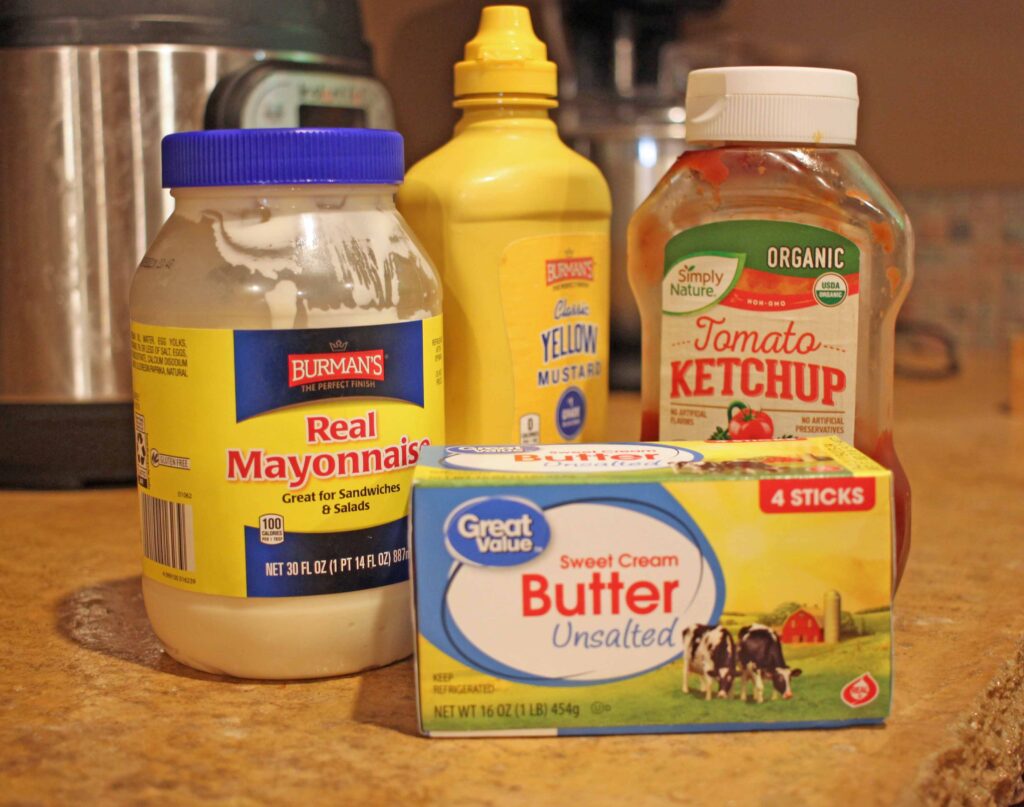Today’s post is a continuation of last week’s post on money saving tips for the kitchen.
Last week, I shared five easy reminders that you probably already know to do to save you time and money in the kitchen. Here are five more tips that are not only frugal, but healthier for the environment and your body as well. Again, these are not ground breaking ideas but I am sharing them because I need the reminders as well.
1. Purchase in season produce
I’ll be the first to admit I love that I can get a tomato pretty much any time of the year where I live. However, they aren’t always the best. Produce shipped across the country or even around the world is simply not going to taste the best. In order to not spoil, the crop must be picked well before it is truly ripe. Not only does this affect the taste, but it also affects the nutritional value. Anyone who’s ever grown their own tomatoes also knows that nothing tastes as good as a vine ripened tomato fresh from the garden.

To get the best bang for your buck, choose produce that is more locally grown and is in season. You’ll not only get it at a lower price, you’ll also be getting healthier food while supporting your local economy. Tasty, friendly money saving tip!
2. Whenever possible use cloth
As tempting and easy as it may be, using paper napkins and paper towels can be a huge budget drain. It is also more harsh for the environment. Using cloth dues require a little investment on the front end, but can result in a big savings over time. Our family hasn’t bought napkins in over twenty years. I don’t recommend making a huge purchase all at once. Just buy a couple of cloth napkins at a time. After a while, you’ll end up with a nice supply. There are also other ways to create your own napkins from tea towels.

It does take a little getting used to, but the adjustment is worth it. When you get to the point that you can simply skip the paper products aisle, your budget will thank you. The environment will thank you. Plus, your family and guests will feel special that you broth the cloth napkins for them while you are saving money following this tip.
3. Switch to reusable instead of disposable
We all have that drawer in the kitchen filled with sandwich bags and disposable food storage containers. Yet have you ever really stopped to consider how much money we are throwing away? Probably not. A couple of dollars every few weeks adds up over the course of a year. This money saving tip really adds up.

This is one area of my kitchen that I found myself more affected by thinking about the BPA’s of plastics. I gradually starting made the shift to glass storage containers rather than plastic ones or baggies. It took months of buying one or two at a time, but over time I replaced all of the BPA plastics with glass containers or canning jars to store leftovers. I also use them for dry goods as well.
I love being able to see through the containers. This has prevented me from running out of items I use often. I can see that the cocoa is almost empty before it becomes and issue.
4. Simplify drink options
We all know that there are certain drinks that really should be eliminated from our diets. However, that’s not always an easy thing to do. However, considering the financial savings can certainly help with the motivation. Choosing to simplify the drink options can make a substantial impact on our wallet and our waistline.

That $5.00 latte once or twice a week can add up to $40 per month. That could be or $480 a year and as much as 10,000 calories. Preparing your own coffee at home can save you the money without sacrificing the caffeine jolt. Meeting friends at the coffee spot? Why not meet at a park instead. You can still have the coffee and visit while soaking in some vitamin D and fresh air. Here’s a money saving tip that is waistline and immunity friendly.
5. Get organized
Organization is probably the simplest and most impactful way to same not only money but time as well. In order to shop from a list, you need to make that list. It’s much easier to make said list when you know what your needs are.

An organized pantry, together helps you to see what you have and plan meals quickly. It also keeps you from buying a fifth jar of olives instead of the peanut butter you really need. Grouping like items helps you see at a glance what your situation is.
Take this same organization to the refrigerator. Store like items in the same area of the refrigerator and in containers that can be seen. No one likes to find a package of cream cheese five months after the expiration date.
Don’t get overwhelmed!
No matter where you start, you’ll find any of these areas can impact your budget. Don’t overwhelm yourself by tackling each item. Choose one. Master it. Then move on. As I’ve shared before, each item can be taken deeper once you are ready.
For now, think little by little. Master one area and enjoy the savings!





